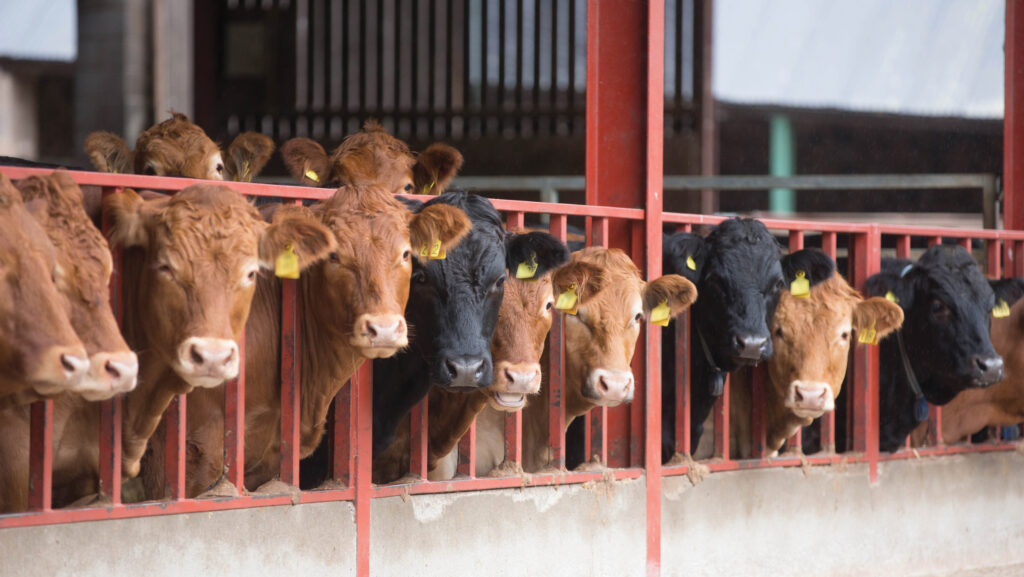Fewer prime cattle in 2025 could lift prices back to £5/kg
 © Tim Scrivener
© Tim Scrivener Tighter supplies of finished cattle next year could reignite the beef trade and strengthen farmgate prices towards the end of 2024 and into 2025.
Prime cattle slaughter in 2025 is forecast to fall by 3% on this year, according to the AHDB’s latest beef market outlook.
Hannah Clarke, the report’s author and a senior analyst at the AHDB, said the UK breeding cow herd contracted by 2% last year, which pointed towards longer-term domestic beef supply reductions.
See also: Lidl invests £1.5bn in British beef and cutting farm emissions
“Robust beef prices have likely incentivised culling from herds,” she added.
This was backed up by figures from the British Cattle Movement Service (BCMS), which showed a 3% annual decline in the number of youngstock as of 1 April 2024.
Defra statistics also showed UK prime cattle slaughterings were down by almost 6% in June on a year earlier.
Finished beef prices peaked at the end of February and were in gradual decline through most of the spring. However, they stabilised in June and have started to climb during July.
GB deadweight steers averaged 480.9p/kg for the week ending 20 July, up by 3.1p/kg on month-earlier levels, while heifers increased by 4.5p/kg on the month to average 480.3p/kg.
Ms Clarke said: “Increased cattle slaughter and growth in import levels have put more supplies onto the market, which pressured prices particularly through the spring.
“Regardless, prices have persisted at historically high levels so far this year, supported by robust consumer demand and underpinned by strong cattle prices in Irish and European markets.”
Demand In the past week alone has picked up, with some processors reportedly increasing base prices by up to 5p/kg in order to remain competitive and guarantee supplies.
Tom Price, retail and consumer insight analyst at the AHDB, added: “We still forecast that 2024 will bring increased demand for retail, with volumes forecasted to rise slightly compared with 2023. However, out-of-home volumes are forecast to decline year-on-year.”
Imports
Beef imports are projected to be 4% higher this year, with Ireland accounting for the majority of this.
However, the GB beef price premium above Irish prices has narrowed in the past year and supplies in Ireland are also forecast to tighten into 2025, so imports may become more constrained.
Slower fall in Scotland
The Scottish beef herd has been in decline during the past year, although at a slightly reduced rate than in England and Wales, according to Quality Meat Scotland (QMS).
Iain Macdonald, market intelligence manager at QMS, said there had been a “renewed acceleration in the year-on-year decline of the beef breeding herd.”
He added: “Looking back over the past six years, the decline in beef-sired females in England and Wales has been significantly steeper than in Scotland, at 14.2% compared with 10.4% for those aged over 30 months.”
Deadweight beef prices reached 489.8p/kg at Scottish abattoirs in the second week of July. Mr Macdonald said this was 1.6% above the lows of early June, but still 3.9% below the peak in February.
